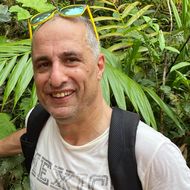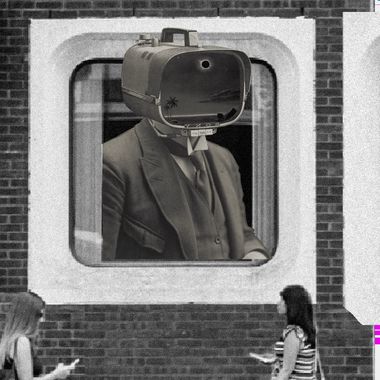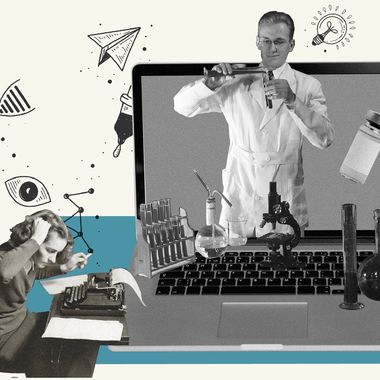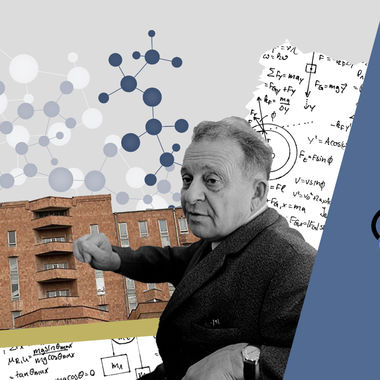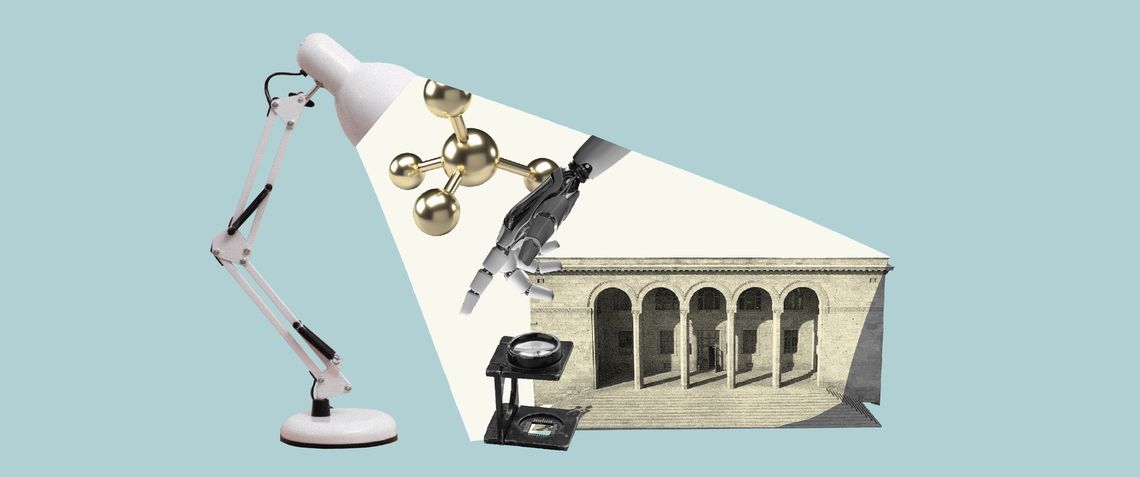
Illustration by Armine Shahbazyan.
Recently, the current state and future direction of science in Armenia has been discussed on various platforms. The picture is disheartening. There is a consensus, however, that the government must invest more in science. In order to ensure scientific-technical development in Armenia, it is necessary to provide at least 4-5% of the GDP to the sphere by implementing a rigorous policy to increase funding. Currently, the funding allocated to science in Armenia does not reach 1% of the country’s GDP. By comparison, Israel spends 4.9% of its GDP on research and development, and South Korea, 4.8%. Furthermore, Korea adopted that policy at a time when it was a developing country, as a result of which it has registered impressive progress.
However, simply throwing money at a problem is not enough; these investments must be managed effectively to ensure they give results. Furthermore, it is important to differentiate the means of funding and look for other sources in parallel to that of the state.
A primary issue for Armenia is isolation and, frequently, self-isolation. It concerns all areas, but its effect on science and technology is particularly palpable.
Frequently, everything is based on the “national” idea. But Armenians being a global nation with a weak state, often confuse the meaning of the words ethnic and national. If we want to talk about national science or research and development (R&D), we should differentiate between these two definitions. Strictly speaking, all scientific and R&D potential, which Armenia had during Soviet times, belonged to the USSR thanks to enormous natural resources somewhere in Siberia. We need to adjust to the reality, admitting that our national scientific institutes and ethnic Armenian scientists are two different things and do not match. The latter's potential is much higher, so to bring them closer, it is necessary to elevate the status of national institutes.
It is important to be open to the world. “National” physics, chemistry, biology, etc. do not exist. Of course, national institutes, universities, educational and scientific research establishments do exist, but they should be integrated into the global community. Science is universal and transcends borders. A country that closes itself off in effect condemns itself to be left as a ghettoized backwater. Science and arts have been commercialized regardless if we like that or not. Talent is traded on the market, and if we want to succeed, we should be present on that market, ensuring some balance between export and import. Mitigating fears of assimilation requires building a state that citizens will be proud of and will invest in elevating it to become more prosperous and powerful.
Scientists should have the opportunity to freely communicate with colleagues, learn from each other and spread knowledge. We are not speaking about digital communication or episodic meetings but working side by side, whether that be abroad or, preferably, at home. Of course, all this necessitates knowledge of foreign languages, which should be studied from an early age. It isn't easy to foresee which child will become a musician or a scientist, or a pilot, but it can be asserted with certainty that all children should be able to speak not only their mother language but also at minimum English and Russian. The European nations, where children learn multiple languages at an early age, are a good example.
Of course, being “open” does not just refer to the language. With a population of almost 3 million, Armenia cannot dominate the top echelons of every scientific field with only its home-grown talent. This concept has been understood in football for quite a long time now. Almost all local Armenian professional football clubs recruit foreign players to their teams. Science, even more so, needs its own quality “strikers,” “defenders” and “goalkeepers”; not including better players on the team because of their ethnic origin holds the whole team back. That leaves even your best local prospects to look abroad in their quest for excellence. Even Israel, which has great internal scientific potential, and an enormous diaspora, has opened up to hiring international experts.
Parallel to the problems faced by having a small scientific community, there are issues of quality. Scientific thought develops through continuous interaction, communication, cooperation and competition. The former Soviet model - which Armenia has never moved past - where a scientist spends their entire life at the same institution, inevitably leads to stagnation. Evaluation of scientific production is not an easy task; there are many complex factors to be taken into account. However, there is an international experience and consensus on which parameters are important for the evaluation. It is not enough to publish only in local magazines, with only local colleagues without competitive and vigorous arbitrating. The level and relevance of scientific magazines are constantly monitored. It has to be taken into account in the evaluation of scientific production. Scarce scientific positions have to be filled in open competition (and by open, I mean international), even more so the positions of heads of institutions. Naturally, the world's best would not flock to Armenia immediately, but we have to start somewhere.
It is imperative that students seek to further their education in other countries. In the West, after achieving their PhD, it is compulsory to complete postdoctoral research, frequently on new topics. Students in Armenia should also have those kinds of opportunities. At the same time, conditions should be created to make Armenia attractive for both students and scientists from abroad (and not just diasporans). This movement of human resources and projects should be double-sided. Otherwise, it will turn into a brain drain of promising youth, which has already been taking place for some time. Bluntly put, if the conditions in Armenia become attractive to foreign researchers, then Armenian scientists will strive to return, not only out of patriotism but for further growth and development. In general, when we speak of conditions and people with higher education and academic degrees, we must realize that three conditions must be in place to ensure an inflow to the country: competitive salaries, academic freedom and protecting intellectual property.
Modern science is very expensive. Scientific institutions, universities and even countries are joining forces to realize large projects. If we want our science to develop, we must ensure our participation in such projects. Suppose our scientific researchers master languages and have the opportunity to communicate and work with their foreign colleagues. In that case, participation in such projects will become a normal occurrence.
Scientific communities making cutting edge advances in narrow fields are small to begin with. Putting up ethnic or linguistic barriers is a self-enforced quarantine. Serious researchers want their work to be read, to be cited and to inspire future advancement.
also read
High Tech, Low Culture: Armenian Creative Industries and New Media
By Vahram Akimyan
This is not a cyberpunk essay about a dystopian future, but rather an attempt to take a pragmatic look at creative industries and the landscape of digital culture in Armenia.
Legal Institutions for an Emerging Technology Economy
By Henry Nikogosyan
On the path to becoming a serious player in the global tech sector, Armenia needs to foster an environment that allows technology companies to achieve their business goals, which includes legal institutions to resolve complex disputes.
Gitak: Bridging Students With Supervisors for Science Research
By Tatev Mkrtumyan
With the absence of qualified academic supervisors and challenges with the quality of student research, there was a need to develop a platform where students and supervisors could meet remotely.
The Physics Intersection: From Armenia’s Scientific Past Toward Its Future
By Kushane Chobanyan
Armenia’s Physics Institute with its Cosmic Ray Division is trying to overcome many challenges by collaborating with different international institutes. A new generation of scientists believe that more investment is needed to support research and science.

